The Metropolitan Transit Authority's Arts & Design program was created in the 1980s to oversee the selection of artists and installation of permanent artworks in subway and commuter rail stations across the city. Since that time, it's become the largest, site-specific public art program in the world and makes commuting for nearly 9 million New Yorkers just a little bit brighter.
We recently highlighted our favorite subway station art in Manhattan and Brooklyn. Now it's time to turn our attention to Queens, where a rich collection of public art pays homage to lost New Yorkers, inspires weary commuters and shines a light on the borough's abundant appeal.
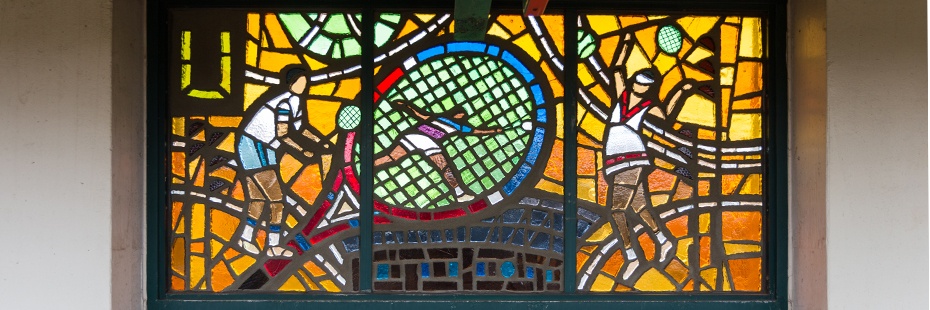
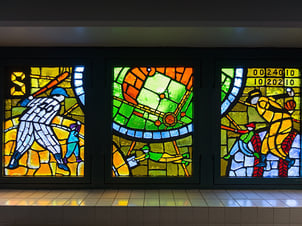
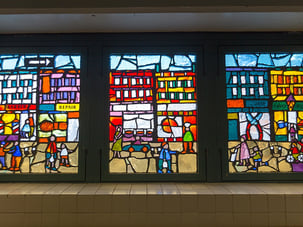
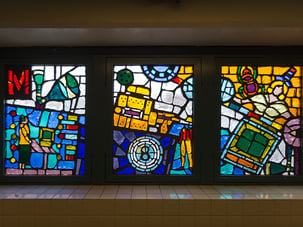
"Q is for Queens" — 33rd-Rawson, 40th-Lowery and 46th-Bliss, Long Island City/Sunnyside
As the 7 train ascends from underground to above ground in Long Island City, straphangers are treated to a visual history of Queens that stretches through three stations at 33rd, 40th and 46th streets. Dubbed "Q is for Queens," the stunning collection of 30 stained glass murals depicts the borough's rich and diverse history in alphabetical fashion, from "A is for Aqueduct" to "Z is for zoo." The artist, Yumi Heo, was born and raised in Korea, but moved to New York City in 1989 to continue her education at the New York School of Visual Arts. In addition to the station art, installed in 1999, Heo was well-known for her illustrated children's books. She died in 2016, at the age of 52, after a long battle with cancer.
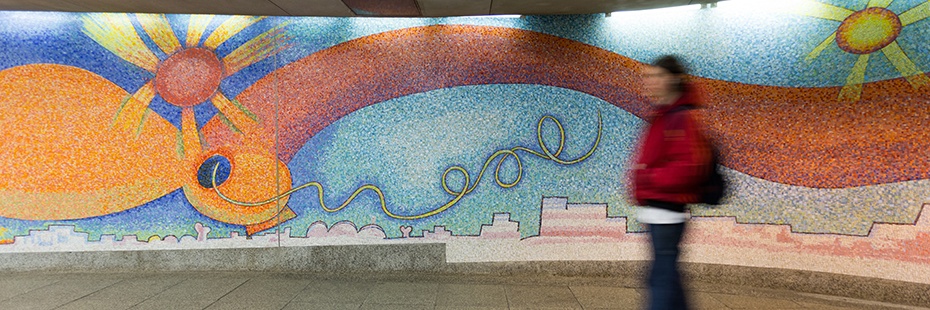
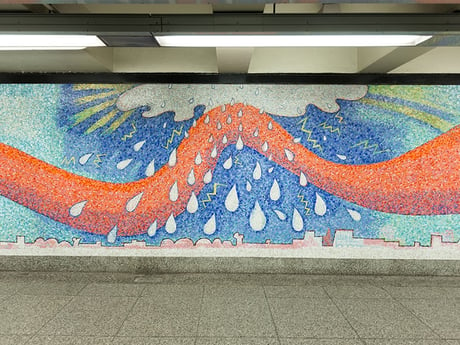
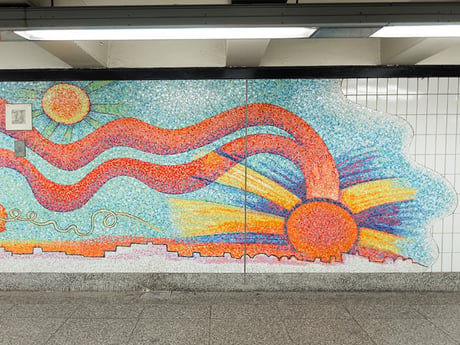
"Stream" — Court Square, Long Island City
As busy New Yorkers wind their way through the massive Court Square station in Long Island City, which connects E, M, 7 and G lines, their nerves will be soothed and their energy restored by the undulating mosaic "Stream" by Elizabeth Murray. Stretching a full 40 feet along what would otherwise be a long and dreary passageway and people mover connecting the G line to E and M trains, the abstract work practically surges off the wall with vivid colors and rhythmic movement. Murray's mosaic work also appears in the 59th Street-Lexington Avenue Station in Manhattan.
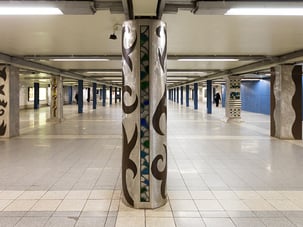
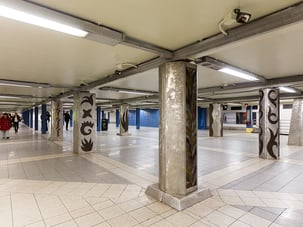
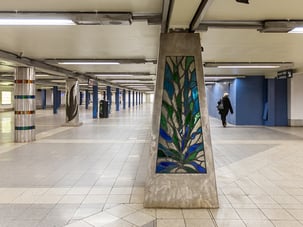
"Lost Battalion" — Woodhaven Boulevard-Queens Mall, Elmhurst
During World War I, roughly 550 men from the United States Army's 77th Division were surrounded by German forces in France's Argonne Forest. The enlisted men of the 77th were largely recent immigrants and working-class poor from New York City. Known as the Lost Battalion, only 194 men were ultimately rescued, and in the Woodhaven Boulevard station, artist Pablo Tauler pays homage to the fallen soldiers. By wrapping nine station support beams in a number of materials from stainless steel to architectural glass, the installation is reminiscent of soldiers standing watch as commuters make their way to M and R trains.
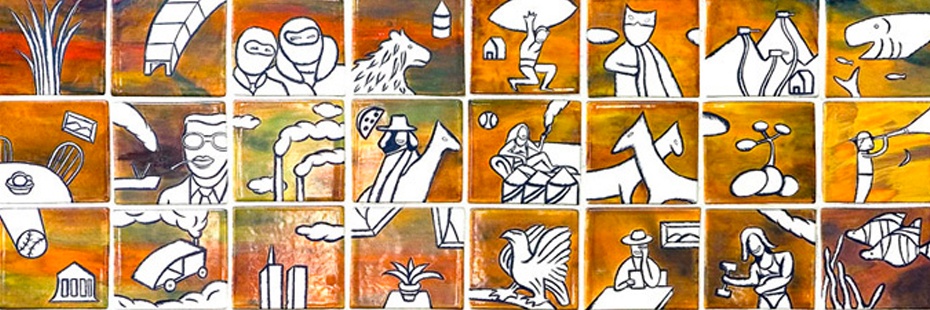
"Happy World" — Flushing-Main Street, Flushing (Photo via web.mta.info)
In Queens' busiest station, and the final stop on the Queens-bound 7 line, more than 60,000 New Yorkers per day draw inspiration from artist Ik-Joong Kang's thousands of ceramic tiles. Featuring black-and-white sketches on colorful backgrounds, each of the 2,000 tiles depicts a unique scene, from children at play and people at work to community events and iconic Queens attractions. "'Happy World' began when I was riding the subway every day. I was fascinated by the different people and things I saw, so I took small canvases with me and began to create the images that became the work," explains Kang. Viewed individually, the tiles are charming vignettes, but when taken en masse, the work ingeniously represents the rich tapestry created by the lives of our fair city's multitudes. Happy World, indeed.
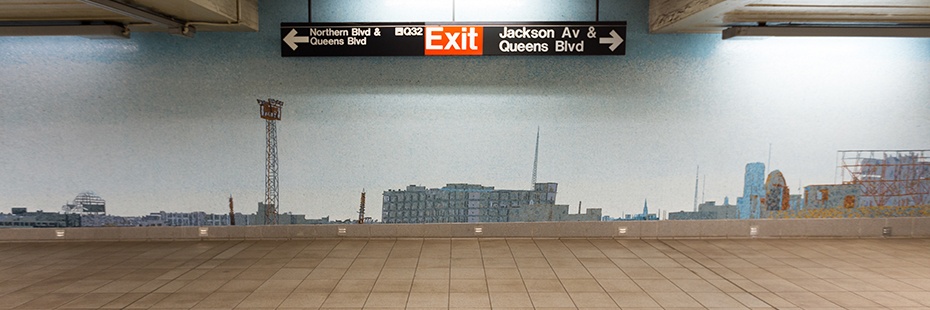
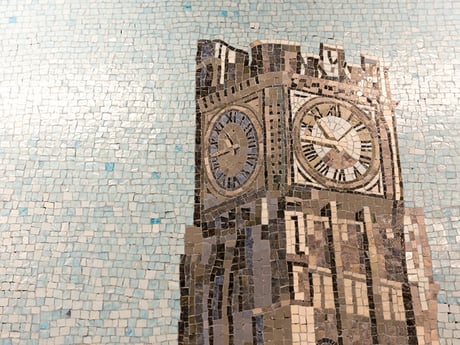
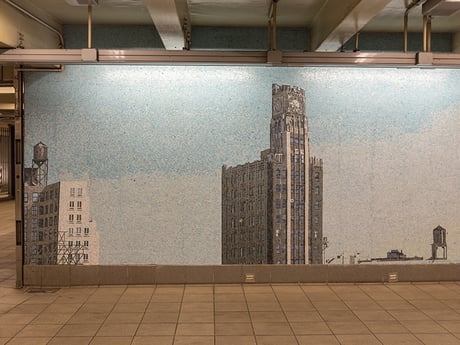
"Look Up, Not Down" — Queens Plaza, Long Island City
With her clever murals that play with both perspective and setting, artist Ellen Harvey invites New Yorkers to give their everyday surroundings another look. The series of mosaics in serene hues spans walls and overhangs throughout the station, depicting the city's skyline as it existed when the work was created in 2005. As an homage, the sun is featured where the World Trade Center's twin towers once stood. As historical reference point, the work will continue to demonstrate the ever-evolving nature of our thriving metropolis as time marches on.
To learn more about our city's amazing transit system, head to the New York Transit Museum, also in Brooklyn, at the corner of Boerum Place and Schermerhorn Street.
 201 366 8692
201 366 8692






![The Five Must-Check Apartment Sites for Renters [Updated in 2019]](https://www.dixonleasing.com/hubfs/Homes%20by%20Dixon%20Images/Rent%20Savvy/RentSavvy_MustCheckSites_Large.jpg)

